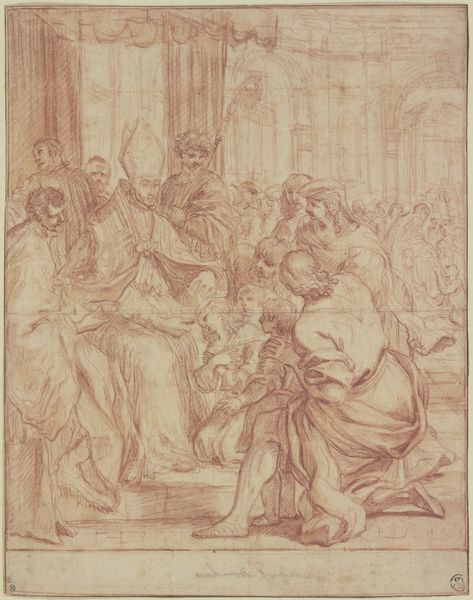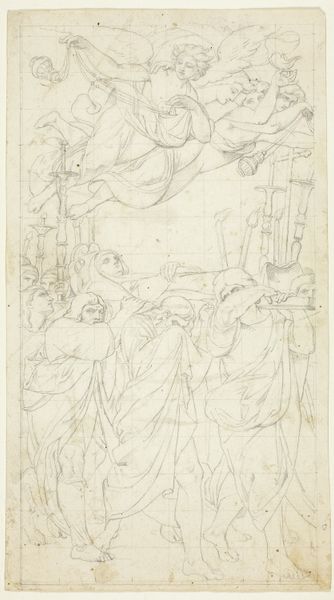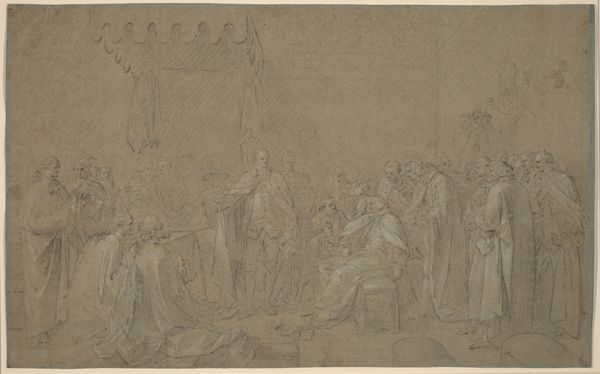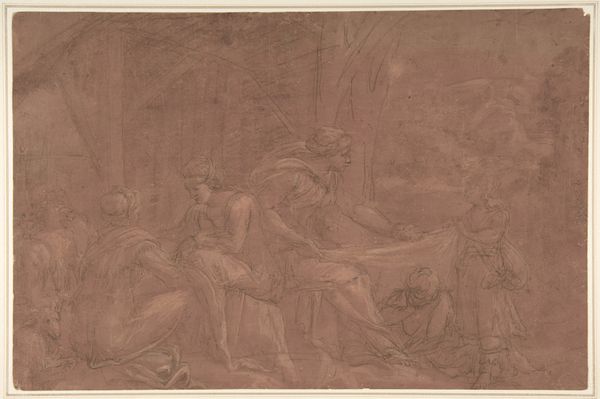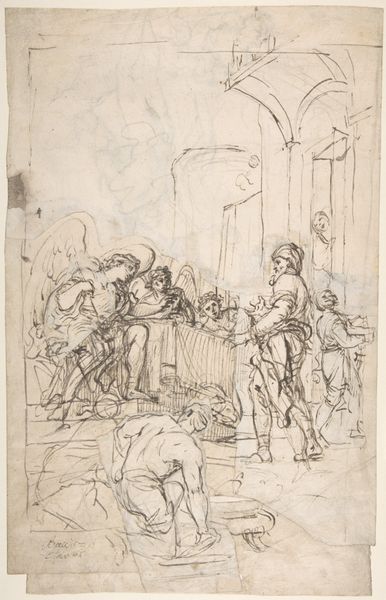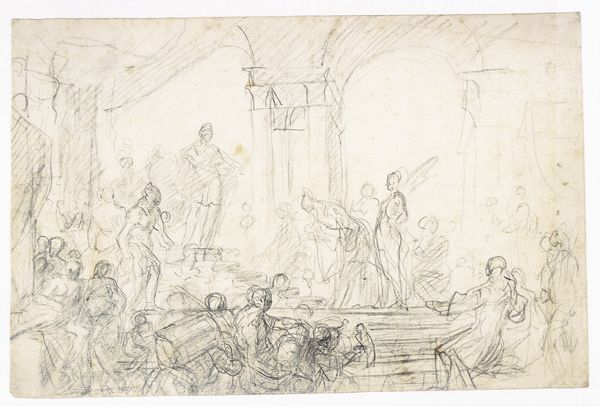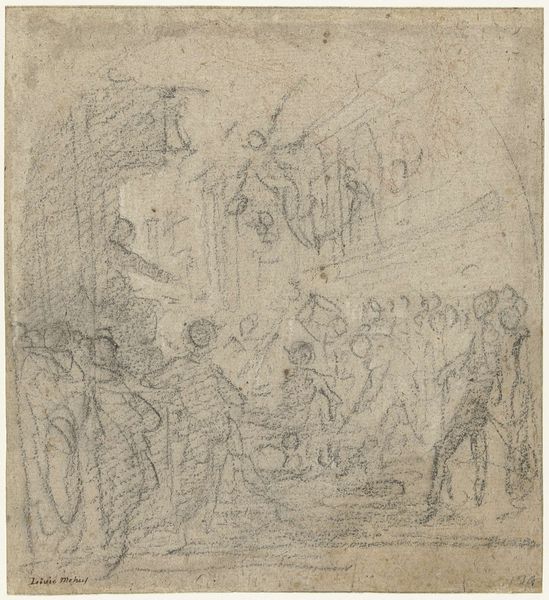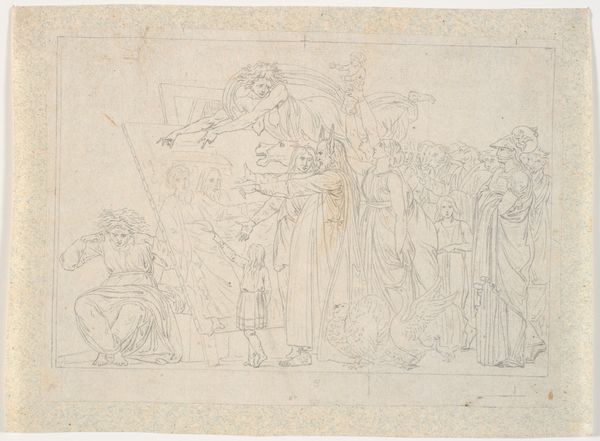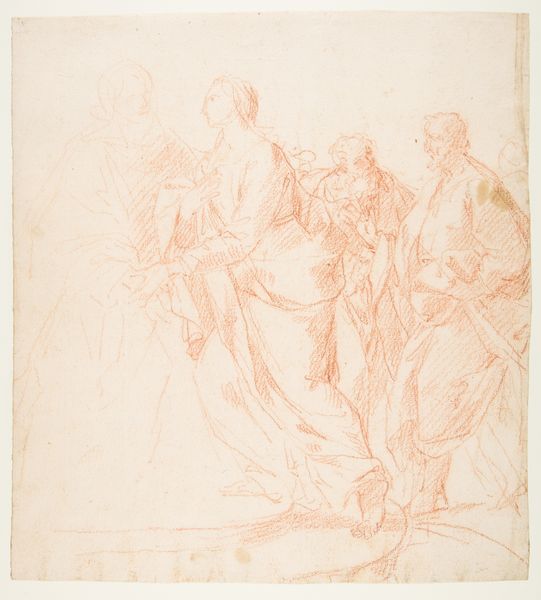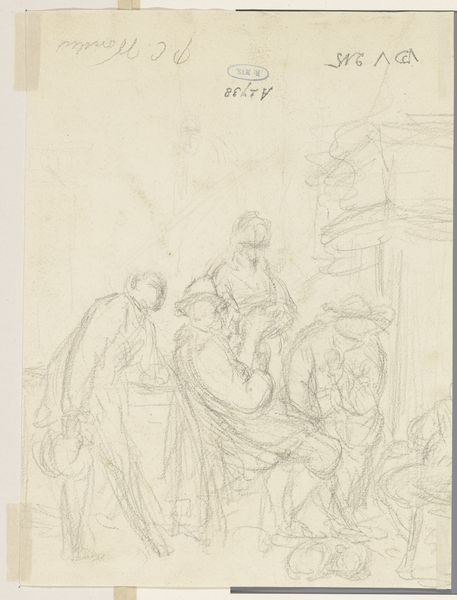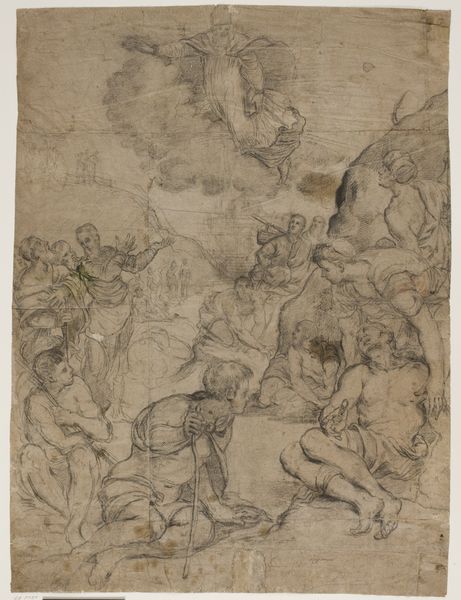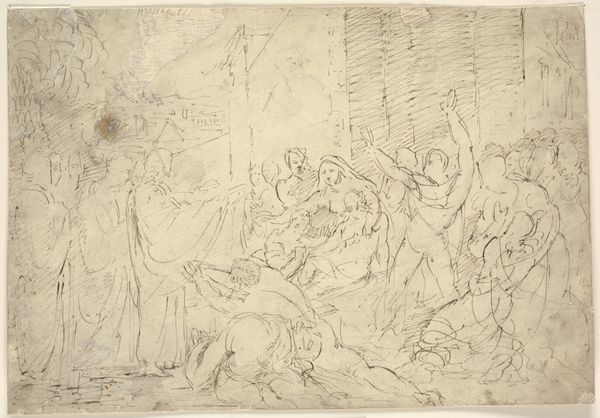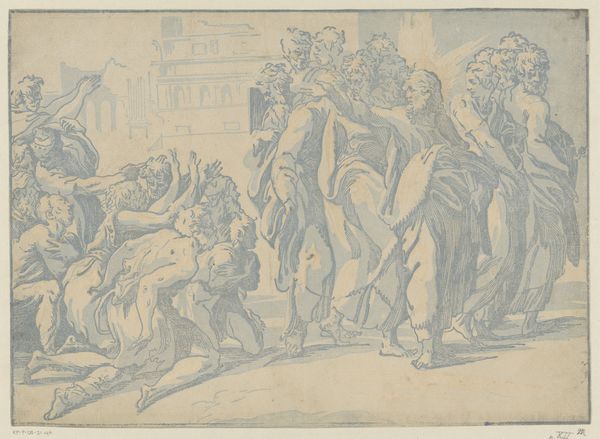
drawing, graphite
#
drawing
#
baroque
#
landscape
#
figuration
#
graphite
#
history-painting
Copyright: Public Domain
Curator: Welcome. We’re looking at "Die Predigt des Heiligen Paulus in Ephesus," a drawing attributed to Eustache Le Sueur, created around 1649. This sketch, rendered in graphite, depicts a scene of St. Paul's sermon in Ephesus. Editor: It feels very preliminary, almost ethereal. The graphite strokes are light, giving the entire scene a sense of transience, like a vision barely formed. Curator: Exactly. It offers us a glimpse into Le Sueur’s creative process, revealing how baroque history-painting began in careful study. Le Sueur, deeply influenced by classical antiquity and Italian Renaissance ideals, was intent on capturing key historical and biblical moments. Ephesus was, during Paul’s time, a melting pot of various religious and philosophical beliefs; this scene would represent Paul’s attempt to convert the Ephesians. Editor: The figure of Paul in the center commands attention, surrounded by individuals reacting intensely—some kneeling, some in apparent distress. Is Le Sueur depicting the exact moment of conversion, where deeply-held beliefs are being challenged? Curator: It is very possible. This depiction isn't merely a historical record, but a piece intended to participate in religious and intellectual discourse of its time. Note the architectural backdrop - it resembles Roman basilicas adapted to Christian purposes, showing how the artwork functions to bolster established power structures through its stylistic choices. Editor: And in that light, is it also about colonial power and suppression of pagan and local traditions? I find myself wondering about the Ephesian perspective—their agency, their pre-existing beliefs that were, in all likelihood, far from a 'void' waiting to be filled by Christianity. Curator: Precisely! It's crucial to read such works with a critical eye towards how they represent marginalized groups. History painting often presents a very particular, and usually biased, version of events, meant to legitimise acts of ideological authority. Editor: Thank you for that insight; it reframes the way I look at not just this piece, but history painting in general. It makes me consider whose stories are privileged. Curator: Indeed. Examining Le Sueur's drawing in context reveals its complex position within art history. It acts as both a testament to the artist’s talent and an instrument in larger societal forces.
Comments
No comments
Be the first to comment and join the conversation on the ultimate creative platform.
